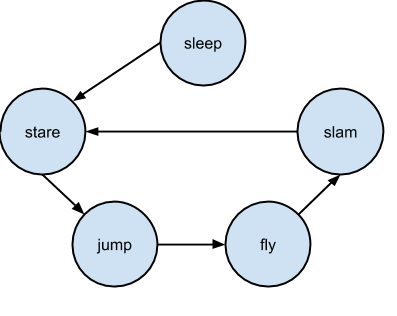Aug 11, 2014 at 8:24 PM
Join Date: Aug 11, 2014
Location:
Posts: 57
Hi guys, just joined the forums, so here’s a small amount of background: I've been programming game engines (or rather, "game engines" since I can't say I've made a successful game with them) for a while now and I'm recently trying to dedicate myself to making actual games as opposed to just tech.
The problem I seem to have, however, is settling my thoughts on the best way to program characters. I normally don't have any problem programming intrinsic engine behaviors like lighting, physics, graphics, ect. When I get to something like character programming, though, I start flopping like a fish out of water. I've tried everything from normal "update" based models to coroutines to finite state machines and all results just feel so verbose and needlessly complicated. The code always ends up with a ton of special cases that turn it into such a mess. That's what bothers me the most.
I want to deal with character and enemy code in an elegant way, and I would like to know if anyone here would like to share their methodologies and experiences for programming them. I chose to post on CS forums because, as practice, I would like to recreate some simple CS enemies in my own script system.
I realize this is kind of a vague question, something akin to "how do I program fun", but I hope I'm not alone in my feelings here.
Thanks in advance.
The problem I seem to have, however, is settling my thoughts on the best way to program characters. I normally don't have any problem programming intrinsic engine behaviors like lighting, physics, graphics, ect. When I get to something like character programming, though, I start flopping like a fish out of water. I've tried everything from normal "update" based models to coroutines to finite state machines and all results just feel so verbose and needlessly complicated. The code always ends up with a ton of special cases that turn it into such a mess. That's what bothers me the most.
I want to deal with character and enemy code in an elegant way, and I would like to know if anyone here would like to share their methodologies and experiences for programming them. I chose to post on CS forums because, as practice, I would like to recreate some simple CS enemies in my own script system.
I realize this is kind of a vague question, something akin to "how do I program fun", but I hope I'm not alone in my feelings here.
Thanks in advance.




 tr_fun(&Func), *this) doesn't really do anything to get the concept across
tr_fun(&Func), *this) doesn't really do anything to get the concept across 